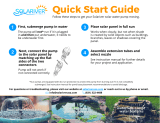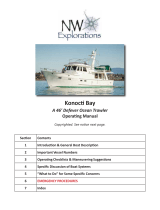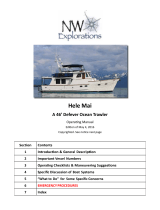Bavaria CRUSER 51 KONDOR 2018 User manual
- Type
- User manual
Bavaria CRUSER 51 KONDOR 2018 is a versatile and well-equipped yacht that offers a wide range of features and capabilities for a variety of boating activities. With its spacious layout, comfortable accommodations, and advanced systems, the Bavaria CRUSER 51 KONDOR 2018 is perfect for cruising, fishing, or simply enjoying a day on the water with family and friends.
Some of the key features of the Bavaria CRUSER 51 KONDOR 2018 include:
- A spacious cockpit with ample seating, a wet bar, and a grill, perfect for entertaining guests or simply relaxing and enjoying the scenery.
- A large swim platform with a built-in ladder, making it easy to get in and out of the water for swimming, diving, or fishing.
Bavaria CRUSER 51 KONDOR 2018 is a versatile and well-equipped yacht that offers a wide range of features and capabilities for a variety of boating activities. With its spacious layout, comfortable accommodations, and advanced systems, the Bavaria CRUSER 51 KONDOR 2018 is perfect for cruising, fishing, or simply enjoying a day on the water with family and friends.
Some of the key features of the Bavaria CRUSER 51 KONDOR 2018 include:
- A spacious cockpit with ample seating, a wet bar, and a grill, perfect for entertaining guests or simply relaxing and enjoying the scenery.
- A large swim platform with a built-in ladder, making it easy to get in and out of the water for swimming, diving, or fishing.




















-
 1
1
-
 2
2
-
 3
3
-
 4
4
-
 5
5
-
 6
6
-
 7
7
-
 8
8
-
 9
9
-
 10
10
-
 11
11
-
 12
12
-
 13
13
-
 14
14
-
 15
15
-
 16
16
-
 17
17
-
 18
18
-
 19
19
-
 20
20
-
 21
21
-
 22
22
-
 23
23
-
 24
24
-
 25
25
-
 26
26
-
 27
27
-
 28
28
-
 29
29
-
 30
30
Bavaria CRUSER 51 KONDOR 2018 User manual
- Type
- User manual
Bavaria CRUSER 51 KONDOR 2018 is a versatile and well-equipped yacht that offers a wide range of features and capabilities for a variety of boating activities. With its spacious layout, comfortable accommodations, and advanced systems, the Bavaria CRUSER 51 KONDOR 2018 is perfect for cruising, fishing, or simply enjoying a day on the water with family and friends.
Some of the key features of the Bavaria CRUSER 51 KONDOR 2018 include:
- A spacious cockpit with ample seating, a wet bar, and a grill, perfect for entertaining guests or simply relaxing and enjoying the scenery.
- A large swim platform with a built-in ladder, making it easy to get in and out of the water for swimming, diving, or fishing.
Ask a question and I''ll find the answer in the document
Finding information in a document is now easier with AI
Related papers
-
Bavaria 46 2006 Information & Operation Manual
-
Bavaria 33 2008 Information & Operation Manual
-
Bavaria 36 2003 Information & Operation Manual
-
Bavaria 33 2006 Information & Operations Manual For
-
Bavaria 50 Cruiser 2009 User manual
-
Bavaria 46 2013 Information & Operation Manual
-
Bavaria 36 2010 Information & Operation Manual
-
Bavaria 36’ ESCAPE User manual
-
Bavaria VIRTESS 420 Owner's manual
-
Bavaria 42 CRUISER Owner's manual
Other documents
-
 SOLARIVER SRK20360 User guide
SOLARIVER SRK20360 User guide
-
 NW Explorations Konocti Bay Operating instructions
NW Explorations Konocti Bay Operating instructions
-
Regal 52 SC Owner's manual
-
Regal 26 XO Owner's manual
-
Regal 33 XO Owner's manual
-
Regal 42SC Owner's manual
-
Regal 42 Fly-Grande Coupe Owner's manual
-
Regal 38 EXPRESS Owner's manual
-
Regal 38 Grande Coupe Owner's manual
-
 NW Explorations HELE MAI A 46 Operating instructions
NW Explorations HELE MAI A 46 Operating instructions
































